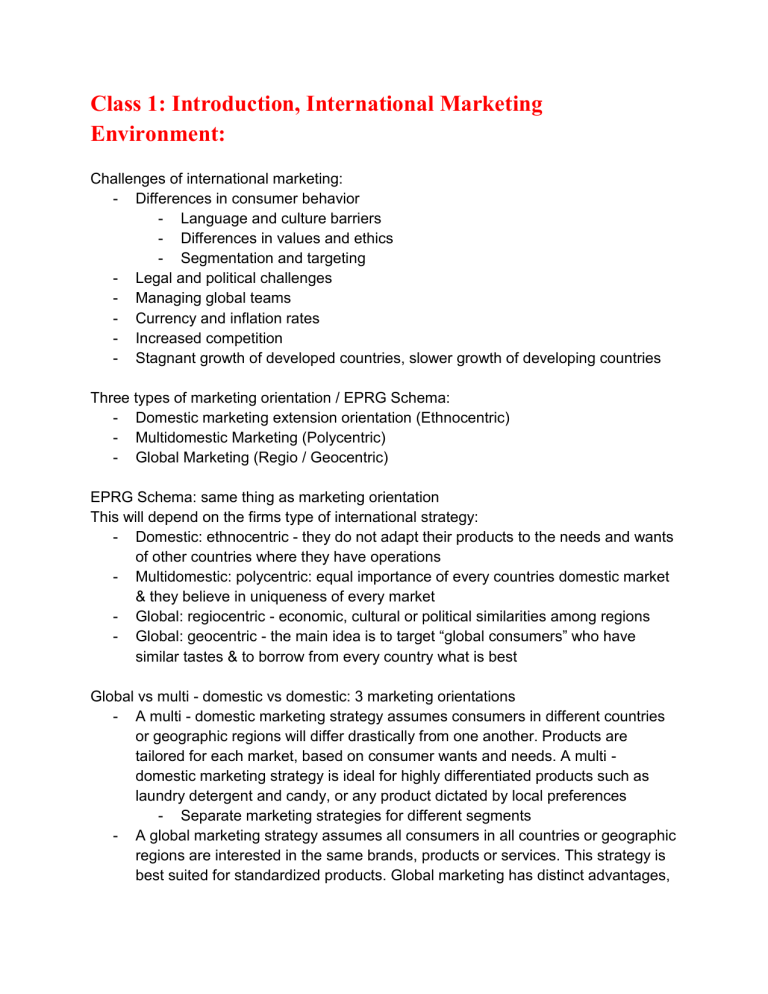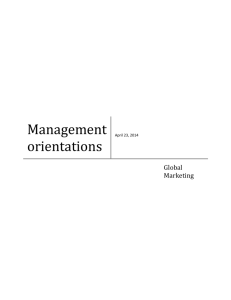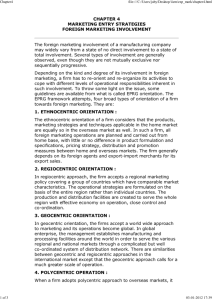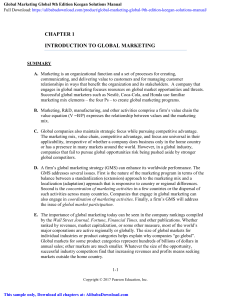
Class 1: Introduction, International Marketing Environment: Challenges of international marketing: - Differences in consumer behavior - Language and culture barriers - Differences in values and ethics - Segmentation and targeting - Legal and political challenges - Managing global teams - Currency and inflation rates - Increased competition - Stagnant growth of developed countries, slower growth of developing countries Three types of marketing orientation / EPRG Schema: - Domestic marketing extension orientation (Ethnocentric) - Multidomestic Marketing (Polycentric) - Global Marketing (Regio / Geocentric) EPRG Schema: same thing as marketing orientation This will depend on the firms type of international strategy: - Domestic: ethnocentric - they do not adapt their products to the needs and wants of other countries where they have operations - Multidomestic: polycentric: equal importance of every countries domestic market & they believe in uniqueness of every market - Global: regiocentric - economic, cultural or political similarities among regions - Global: geocentric - the main idea is to target “global consumers” who have similar tastes & to borrow from every country what is best Global vs multi - domestic vs domestic: 3 marketing orientations - A multi - domestic marketing strategy assumes consumers in different countries or geographic regions will differ drastically from one another. Products are tailored for each market, based on consumer wants and needs. A multi domestic marketing strategy is ideal for highly differentiated products such as laundry detergent and candy, or any product dictated by local preferences - Separate marketing strategies for different segments - A global marketing strategy assumes all consumers in all countries or geographic regions are interested in the same brands, products or services. This strategy is best suited for standardized products. Global marketing has distinct advantages, - allowing for centralized management and coordination or critical business function - Specific segment among the consumers, and target a single segment with a specific marketing plan Domestic: they do not adapt their products to the needs and wants of other countries where they have operations - Approach markets with the same marketing plan, ignoring difference amongst segments - Standardized product and standardized marketing plan International Trade: - Economic size and population: - These indicate market potential for many different types of product (particularly consumer goods) - Marketing impacts of Brexit: - Increased emphasis on “british made” - Cuts in marketing budget due to uncertainty - Fall in pound - Recruitment problems - Political environment regarding international trade: - The government controls and restricts a company’s activities by encouraging and offering support or discouraging and banning its activities







